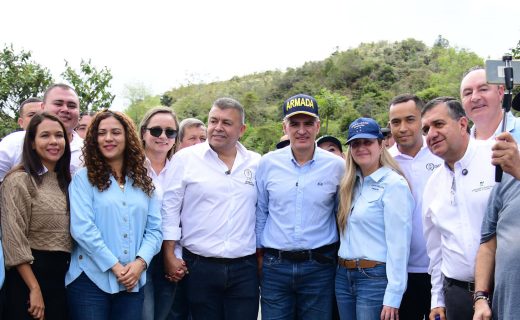

Corantioquia and Grupo Empresarial Argos launch an alliance for the conservation, restoration and recovery of ecosystems in the Cartama Province with the planting of 150,000 trees
30 September 2020- The alliance seeks to generate a territorial and environmental benefit in the region with the implementation of actions that contribute to the sustainability of biodiverse ecosystems.
- As one of the first initiatives of the program, 150,000 trees will be planted this year, in days in which people from the community who were employed by the alliance will participate, which will continue in force until 2023.
- In addition to reforestation activities, research and training processes for the inhabitants of the region, the development of sustainable agroforestry systems, and scientific tourism and environmental culture activities are added.
With the planting of 150,000 trees, Corantioquia implementing its umbrella strategy La Red for sustainable development Bio +, the Fundación Grupo Argos, Odinsa and Celsia, through their ReverdeC program, launched the alliance for the conservation, restoration and regeneration of biodiverse ecosystems in the Cartama Province, which seeks to build social value in the Southwest of Antioquia through the generation of a positive territorial and environmental transformation that aims to adapt to climate change.
The alliance unites efforts and capacities around the design, implementation and promotion of actions of conservation and ecological restoration, under the integral management of water basins, contributing to the improvement of vegetal covers and the ecosystem connectivity of the territory. This program contributes to the protection and strengthening of water resources, biodiversity, and the development of the natural capital of the Cartama Province, with an important socioeconomic benefit and the involvement of the communities of the territory.
“We are proud to be part of projects that generate value and promote the growth of a biodiverse territory such as the Southwest of Antioquia. The work and the sum of wills between the public and private sectors through this type of programs are essential to contribute to regional sustainability through strategic ecological restoration actions for the territory, which translates into improving quality of life of the communities ”.
Ana Mercedes Villegas
Executive Director of the Grupo Argos Foundation
“From Corantioquia we celebrate this great alliance with companies that have demonstrated, throughout their history, that great economic opportunities can be generated for the region around sustainable development. It is the opportunity to point to the strengthening of the Bio + Sustainable Regional Development Network, which seeks the generation of alliances, the articulation of knowledge and resources to be able to generate ecosystems that provide greater opportunities, improving environmental conditions, connecting territories and communities ”.
Ana Ligia Mora
Director of Corantioquia
“At Odinsa we ratify our commitment to sustainability with this important alliance that will allow us to amplify and multiply the positive impact of the management developed in the Southwest of Antioquia to contribute to the care of biodiversity and strategic ecosystems for the territory, in conjunction with the communities ”
Mauricio Ossa,
President of Odinsa
“At Celsia we are very happy to participate in this alliance with our ReverdeC watershed ecological restoration program, with which we have planted more than 4 million trees in Valle del Cauca. For us it represents the possibility of continuing to strengthen the program in Antioquia, and we hope to contribute all the experience we have acquired in the plantings and in the relationship with the communities ”
Jairo villada
Socio-Environmental Management Leader of Celsia
In addition, within the framework of this initiative, the institutions will promote research and training processes, sustainable agroforestry systems, production of plant material, scientific tourism activities and environmental culture. This alliance is in addition to the voluntary and compulsory compensation strategies led by the Argos Business Group in this area of Antioquia with an action plan for the recovery of strategic ecosystems in more than 10,000 hectares.
Mas noticias
-
 Employer Brand
Employer Brand -
 Talent
TalentOver 2,800 Employees Trained in Diversity and 57% Female Representation on the Board of Directors: Grupo Argos Advances Its Equity and Inclusion Strategy
15 April 2025 Read more -
 Creamos Valor Social
Creamos Valor SocialMore than 25,000 people will benefit from the improvement of the Alto de la Quiebra – Santo Domingo road, developed through the Works for Taxes mechanism
9 April 2025 Read more -
 Talent
TalentAccess to postgraduate programs: one of the talent development benefits that more than 200 Grupo Argos employees have used in recent years
8 April 2025 Read more -
 Employer Brand
Employer BrandMore than 1,800 employees from Grupo Argos companies went through internal mobility processes during 2024, with 27% of them being promotions
3 April 2025 Read more
